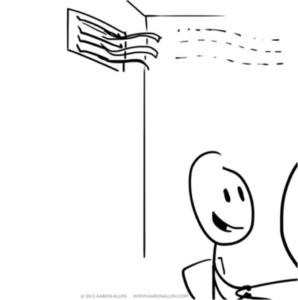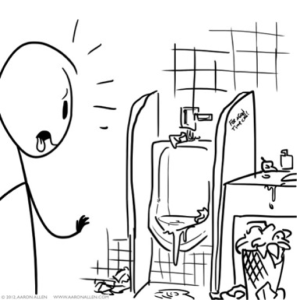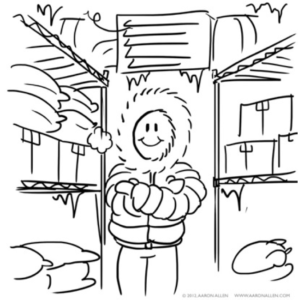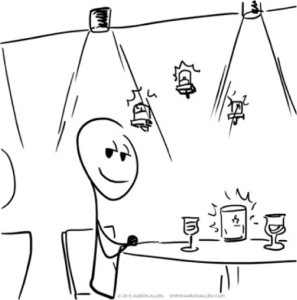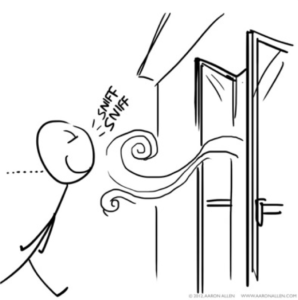In the United States alone, there are nearly one million restaurants, each trying hard to differentiate itself from the next. It’s not an easy task. In fact, there are so many restaurant design tips to consider when it comes to launching a new concept—from branding (your biggest concern) down to the silverware.
Believe it or not, there are million-dollar corporations just winging it, wanting to build first and ask questions later. Bad idea. Here are a few proven methodologies relevant both for the mom-and-pop start-up as well as the multinational mega-chain pursuing growth.
The overall process for designing a restaurant, remodeling, planning, etc. is often referred to as the discipline of “Restaurant Concept Development.” If you’re creating a new prototype, think of it as creating a new concept – concept development.
Restaurant concept development involves restaurant design, but also includes market and competitive research, emerging and fading trends, financial modeling and what-if scenarios, branding and brand evolution, supply chain issues, and potentially even brand portfolio management (for hospitality enterprises with multiple brands in a family that must articulate). Simply put, design considerations involve a variety of people, not just interior designers and architects.
Starbucks has spent hundreds of millions of dollars to perfect what we see today in its latest restaurant prototype. It’s wishful thinking to think it could be duplicated for the cost of what you could build a single unit today. But many companies think this way. To be successful, you must consider the “soft” costs of development. Mega chains, like Darden, can afford seven-figure salaried executive vice presidents and teams of hundreds working on a new concept. It’s believed well over $10m (“soft” costs) was spent developing just the prototype plans for its heralded Season’s 52 concept. Darden is the world’s most successful casual dining restaurant chain, so it’s fair to think they weren’t just burning money with their investment.
Can a new prototype be created for less than $10m? Of course. However, it’s less likely that the next billion-dollar brand can be conceived for less than the cost of opening a single unit. At a minimum, you can expect to spend a lot more in the years to come correcting the mistakes of the under-funded prototype. There’s a saying, “Measure twice and cut once.”
No matter if your restaurant serves fast-food or it’s fast-casual or full-service, there are hundreds of elements involved. Restaurant design considerations involve decisions for the restaurant interior design including color schemes, furnishing, textures, finishes, decoration, etc., and exterior design including lighting, drive-thru, outside dining areas, etc. Today’s successful restaurant concepts are about more than just: “Good Food, Good Service, Good Atmosphere…” That’s a bad motto.
This overview is by no means comprehensive, but it does provide you with a sense for how complex these projects can be and why it’s common to see experienced design consultants intimately involved in bringing to life today’s successful restaurant concepts.
1. BRAND PERSONALITY
Brands, like people, have personalities. A person can become known for acting or behaving a certain way. So will your brand. The personality of your brand should be defined and programmed.
This programming should happen before the first sketch of the restaurant design is even considered.
2. BRAND PROMISES
We would all like to think we have integrity—saying what you’re going to do and then doing it when you say you will.
For a brand to have integrity, one must establish a distinct set of promises that differentiate that brand and define it. When the promises are met with integrity, a strong brand is the result. Chipotle, and its promise to deliver humanely raised food sources, is a good example for foodservice.
3. BRAND POSITIONING
You don’t merely want to be considered the best of the best; you want to be considered the only one who does what you do.
The idea of “betterness” (we have a better burger, better restaurant design, etc.) is subjective. When you are the “only,” you become a sole-source provider and can dominate a market.
4. SILVERWARE
We often don’t think consciously about our silverware when eating in a restaurant, but it can make an impression of the food before you even take your first bite. Light, flimsy, and cheap silverware will give an impression of light, flimsy and cheap food and affects the dining experience. That’s why you will notice that many high-end steakhouses use large, heavy knives. Tableware reflects on the restaurant and restaurant owners should consider it in the overall design and concept development.
5. UNIFORMS
Restaurant uniforms have come a long way since the day of the fine dining “monkey suit.” Even celebrity fashion designers are getting in on the action and designing uniforms for restaurants. It’s a smart move. Some chain restaurants have tens of thousands of employees and each is an ambassador of the brand. The uniform is an extension of the brand and should be viewed through the same lens as your overall design process.
6. VENTILATION
Many regions around the world are outlawing smoking in public places. I’m still amazed by how many places don’t. I’m not a smoker, but I would imagine not even smokers want to walk out of a restaurant smelling like an ashtray. Ventilation is about more than the smells we don’t want to smell and it’s also affected by space-planning and the restaurant layout (also read below about “aroma design”). For instance, imagine a restaurant conceived in Florida but built in Massachusetts; you have to take an entirely different approach to seasonal temperature fluctuations. Large cavernous spaces can be drafty. Ventilation is an important consideration in the design of a restaurant and just another example as to why design is about so much more than just good aesthetics.
7. BATHROOMS & BRAND IMMERSION
An unkempt bathroom must mean a disastrous kitchen. “If they allow their bathrooms – which are in plain sight of customers – to get like this, what must the kitchen look like?” Aside from cleanliness, the bathroom presents an opportunity to further differentiate a restaurant and make an impression—distinctive and communicative of the brand. Starbucks is a good example of this concept, carrying its color scheme and logo features into the bathroom. You don’t lose the feeling the brand inspires once you leave the dining area. So, is this design or is this marketing? The two are inextricably intertwined.
8. RESTAURANT DESIGN FOR CELEBRITIES
Restaurants, like people, have a “brand personality” and, when properly executed, a restaurant can extend a celebrity’s empire with a walk-in advertisement. Celebrities such as Magic Johnson, Eva Longoria, Justin Timberlake, Gloria Estefan, and others have not only made successful businesses with their restaurants, they have extended their brand into new arenas. Restaurateurs and celebrities could learn from each other. A brand should be fluid enough to travel and transcend.
9. DOORKNOBS CAN SPEAK
We’ve all heard the expression “dumb as a doorknob.” While doorknobs don’t have an inherent intelligence, they can actually quite smartly communicate on your behalf. We usually don’t pay attention to a doorknob unless the doorknob is out of place. Doorknobs speak on behalf of your restaurant before the hostess or greeter staff. The texture, the weight, the materials, the style, the obviousness or understated nature of the doorknob all communicate the brand whether by accident or design.
10. RESTAURANT MENU DESIGN
The most important piece of marketing collateral for a restaurant is its menu. A menu can’t be viewed as simply an inventory listing of items for sale with a corresponding price. It must be viewed as the single most important tool in showcasing your restaurant’s offerings, culinary philosophy, and brand attributes. The weight, size, paper, presentation, fonts and typographies, photos, use of language, and more are important considerations in your restaurant menu. The menu should be viewed as an extension of the interior and exterior design of the restaurant – fully integrated into the brand personality and positioning and affecting sales and profitability.
11. STORAGE NEEDS
Do you plan on receiving lots of small deliveries during the week or will you buy in bulk for savings? Will your distributor let you buy in bulk and store in his warehouse without an additional fee? Do you have high-value inventory that needs special security measures? (After all, you don’t store Remy Martin Louis VIII the same as you store bar napkins). Storage is an example of operational and functional design considerations typically not considered with an interior design curriculum. Where design meets function is often a gap for restaurant designers (often paying too much attention to design trends) but without deep restaurant industry experience.
12. REFRIGERATION NEEDS
Will you have a lot of perishables on your menu that require refrigeration, or are you bringing in boxes of frozen wings and French fries? A restaurant concept with 20 beers on tap will have dramatically different refrigeration needs than an ice cream store. The kitchen area will certainly need to account for that.
13. LIGHTING DESIGN
Think of flickering florescent lights over a grid of office cubicles—it’s not a place you want to be. We watch in amazement as bugs continuously fly toward a bug lamp even though it consistently delivers a fatal electric shock, but we’re attracted to light in much the same way. For reasons not easily explained, lighting captivates moods and wallets. Candles are romantic. Red lights make us stop (and our stomachs growl, incidentally). Low lighting can make us relaxed. Staff need task lighting. Lighting is a highly specialized area of design. Restaurant interiors without a thoughtfully conceived lighting plan is like Disney without fireworks or salt without pepper.
14. ACOUSTICAL DESIGN
A restaurant engages all of the senses. Certainly sight, smell, taste, and touch, but what about sound? One restaurant business in Spain was dreadfully slow and about to go out of business. The restauranteur pumped the recorded sound of a busy restaurant out onto the sidewalk streets and watched as his empty dining room turned into something more inviting and filled to capacity. Likewise, where we do or don’t hear music and ambient noise can make an impact. Here are some interior design ideas: for example, many nightclubs design areas that make it easy to talk to someone you met on a dance floor where you can’t hear yourself think. Another example is the bathroom—an area where you don’t want to hear other people at all.
15. AROMA DESIGN
There’s nothing worse than smelling dirty mop water in the lobby or an unpleasant bathroom odor. A restaurant should emit an aroma that’s appealing (and it needn’t be an upscale restaurant for this to be true). This doesn’t happen by accident. In the hospitality industry, kitchen and bath locations are key in floor plans. Without proper consideration, you may fill your restaurant with wafts of smoke or other stink. You can also have aroma pollution, where there are too many scents floating about. One restaurant we worked with introduced aromatherapy in a way that stimulated the senses and appetite before customers were even in the dining room. Without smell, we would not have taste so clearly. Don’t leave this to chance.
16. RESTAURANT DESIGN PROCESS
The steps in the restaurant design process can be expanded or collapsed to suit your tastes for level of detail. There are hundreds of interdependent decisions and steps. Generally, the timing of these projects can range from several very intense weeks of renovation to potentially a year or more for large-scale development projects moving at a steady pace. As restaurant design consultants, our complete process is proprietary. We’ll be augmenting this article with a follow-up piece on a summary of the process we undertake, but one thing that cannot be over-emphasized is the importance of starting with a very solid restaurant brand constitution/platform. It’s better to spend more time in planning and soft costs of development with an experienced pro than to hire architectural design services and rush into it and try to undo mistakes later. It’s much easier to make a change on a digital file than it is to change a major mistake on a completed building.
17. LICENSED RESTAURANT DESIGNERS & ARCHITECTS
Each country, state, and county has dramatically different codes and laws governing design, architecture, construction documents, etc. As a result, the permitting process for a new project can take from a few weeks to several years. Navigating through this minefield of bureaucracy can be challenging. Ultimately, all plans must be submitted to these boards via a licensed architect. They must be “signed and sealed,” meaning a senior licensed architect has reviewed the design, the architecture, and the mechanical, electrical and plumbing plans (often referred to as the MEP*).
The location of your selected consultants is less important than specialization. This process can and often is completed at a distance (i.e. architects in New York creating buildings in Dubai, or a specialized restaurant designer in Orlando doing a project in Mexico, or wherever).
That said, it is often advised for complex projects to also retain a local architect who is familiar with the codes in some jurisdictions and has the relationships to physically “walk the plans through permitting.” Although it shouldn’t be the case, the “locals” sometimes get special treatment. Familiarization with local codes and officials, however, shouldn’t be more important to you than the big picture in your selections. We recommend hiring locals to augment the team on bigger projects, not to necessarily run them. We have several licensed architects we have worked with and can recommend. We also serve as advisors and project-lead for restaurant concept development in articulation with your own selected licensed designer.
*[NOTE: Aaron Allen does not represent himself as a licensed interior designer or licensed architectural firm. We are restaurant design “consultants” specializing in overall restaurant design strategy, branding, concept development and comprehensive integration of projects as Restaurant Consultant.]
18. “MARKETING DEPT.” AND RESTAURANT DESIGN
There are dozens of specialized disciplines that must come together to complete a successful new restaurant prototype. So, who is the quarterback? Yes, the owner of the team is still the owner of the team, but that’s not the person running every call of the game. We believe the entire team should report to the most senior marketing strategist, who in turn reports to the executive team. The decisions for your project should be viewed through the lens of the brand, which is the domain of your most senior marketing advisor. I am not a licensed designer or architect; yet I have successfully led restaurant design projects on six continents representing dozens of new prototypes. It’s been a very successful approach, and one we pioneered.
RELATED CONTENT
20 Most Common Restaurant Design Mistakes
10 Trends Reshaping the Restaurant Industry
Questions to Answer Before Launching a New Menu
Are We Relevant?: Questions to Ask During a Restaurant Brand Audit
ABOUT AARON ALLEN & ASSOCIATES:
Aaron Allen & Associates is a leading global restaurant industry consultancy specializing in growth strategy, marketing, branding, and commercial due diligence for emerging restaurant chains and prestigious private equity firms. We have helped restaurant companies around the world drive revenues, increase profits, and enhance the guest experience through improved marketing, messaging, and menu engineering. Collectively, our clients post more than $100 billion, span all 6 inhabited continents and 100+ countries, with locations totaling tens of thousands.







